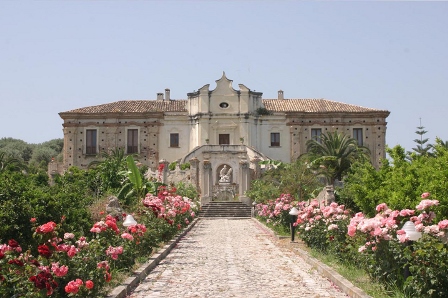
WTI Magazine #56 2015 March, 20
Author : Italian Botanical Heritage Translation by: John Cabot University
Villa Caristo, property of the Caristo family, is an important rural mansion of the XVII century. It represents a prestigious and symbolic example of Baroque art in Calabria, so worthy to be included in the philatelic collection of "Le Ville d'Italia" published by Poste Italiane in 1984, with the Regia di Supinigi, Villa dei Principi Mellone in Lecce, and Palazzo Doria Pamphili in Genoa. It is said that it was established upon the ruins of a Roman villa owned by the patrician Stenius, who named the town Stignano.
At the present, experts are not able to identify the creator of the project and realization of the amazing palace and the surrounding park, which reminds for its style the elegant villas around Vesuvius. However, a hypothesis about the architect of the palace is oriented to either Luigi Vanvitelli, Ferdinando Sanfelice or Domenico Antonio Vaccaro, famous exponents of the Italian Eighteenth century architecture.
Unfortunately, through the years, the villa has been robbed of many of its beauties. One of its hundreds statues from Paros, the original majestic architectural elements and the other riches of features, which enhance its authentic beauty.
According to the art historian expert of Calabria's art, Alfonso Frangipane (1881-1970), the villa was defined: "[the villa is one of] the most beautiful and architectonic palace of the region, worthy to be appreciated around the Neapolitan area, as well as the Eighteenth century architecture in Turin and the Baroque art in Catania".
On the façade, built on two levels, is represented a pincher staircase, and the lower part is decorated with a group of marble pieces where is depicted the episode of Tancredi who is baptizing the dying Clorinda. Inside the palace are preserved and can be admired the statue of San Leonardo and the noble chapel with three altars.



